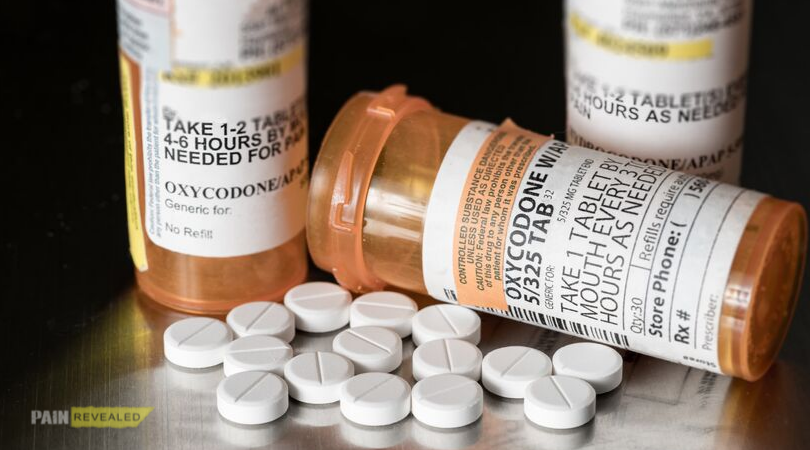The opioid epidemic and its trail of destruction in the United States have been all over the news. And for good reason – over 500,000 people have died from drug overdoses between 2000 and 2015, and 60% of these deaths were due to opioids, according to Thomas Christiansen of The Recovery Village.
The statistics are frightening: 91 people die from opioid abuse daily, and these deaths have quadrupled since 1999. Christiansen further states that, “Oxycodone, which is the generic name of OxyContin, is in the top three drugs responsible for overdose deaths in the United States.”
The National Institute on Drug Abuse (NIDA) reports over 47,000 opioid-related deaths in 2017 alone – a nearly five-fold increase over the span of a decade. Prescription opioid abuse was responsible for the vast majority of these deaths.
Hal Rogers, a Congressman representing Kentucky’s Fifth District, has been speaking out for nearly a decade about the devastation that OxyContin abuse has caused to the constituents of his district. He explains that the original intent of OxyContin was for it to be limited to only those in the most extreme pain, such as severe trauma patients or those with late-stage cancer.
Rogers further adds that the drug has been over-prescribed for less severe diagnoses. This has expanded the availability and potential for abuse for this strong narcotic.
He cites The NIDA, which reported that 1 in 20 high school seniors admit to having abused OxyContin. 66% of students surveyed in the report indicated that they had obtained a prescription opioid for recreational use from a friend or relative.

Oxycodone is the generic name for OxyContin, and it acts on the body by lowering blood pressure and reducing heart rate. The Addiction Center reports that, “Oxycodone depresses a person’s respiration and decreases their blood pressure. This can lead to seizures, comas or cardiac arrest (especially when ingesting, snorting, or injecting crushed tablets).”
Purdue Pharma is being held largely responsible for the fallout of its promotion of OxyContin to physicians, faces billions of dollars of liability, and is trying to negotiate a settlement in the neighborhood of $10 to $12 billion. Opponents of Purdue maintain that the pharmaceutical manufacturer understated the risks of OxyContin and promoted it for wider use than originally intended.
The Associated Press reports that, “The lawsuits assert the company aggressively sold OxyContin as a drug with a low chance of triggering addictions despite knowing that wasn’t true.”
Lawsuits have been filed against Purdue by over 2,000 state, local, and tribal governments in the wake of the opioid epidemic that has been blamed for over 400,000 deaths since 2000. While Purdue’s product represents only a slice of the epidemic on whole, critics claim the company carries a heavy burden of blame due to misleading marketing that led to overprescribing by physicians. As part of settlement negotiations, Purdue filed for bankruptcy in September.
The Centers for Disease Control (CDC) made its concerns known in 2016 when it released updated guidelines to health care providers for the use of OxyContin and other opioids. They caution doctors to start with non-opioid options first, and to communicate risks and realistic pain control expectations to patients. The CDC makes it clear that the overprescribing of opioids is a major driver in the current epidemic situation.

Pain Revealed has made it a mission to educate the public about safer and more natural options. Expert Paul Winterton MD shared with us that many of his patients come to him with serious concerns about pain medications, and that he finds that those who use a complementary therapy like massage and essential oils will actually require lower doses of pain medications and a shorter duration of therapy.
Dr. Craig Buhler explained to us how chiropractic care relieves pain, a view shared by many of our experts. Pedram Shojai gave a similar accounting of the benefits of acupuncture. These professionals are just a few of the many we spoke with about viable and effective options for pain relief and healing.
The bottom line is that Pain Revealed experts, patients, and viewers are all well informed of numerous complementary medical options that reduce and manage pain in a safer and more natural way. While these options may not be the complete answer for the severe pain for which opioids are intended, they can go a long way in reducing their usage and negative fallout.
In the meantime, all concerned parties watch and wait for a final decision concerning Purdue Pharma, their role in the opioid epidemic, and the harm caused to hundreds of thousands due to addiction and even death.
Jacklin Rhoads, spokeswoman for the Pennsylvania Attorney General, shares the concerns of officials nationwide when commenting on the settlement negotiations: “Our mission here has always been clear — make Purdue Pharma and the other manufacturers and distributors pay for what they did…”

